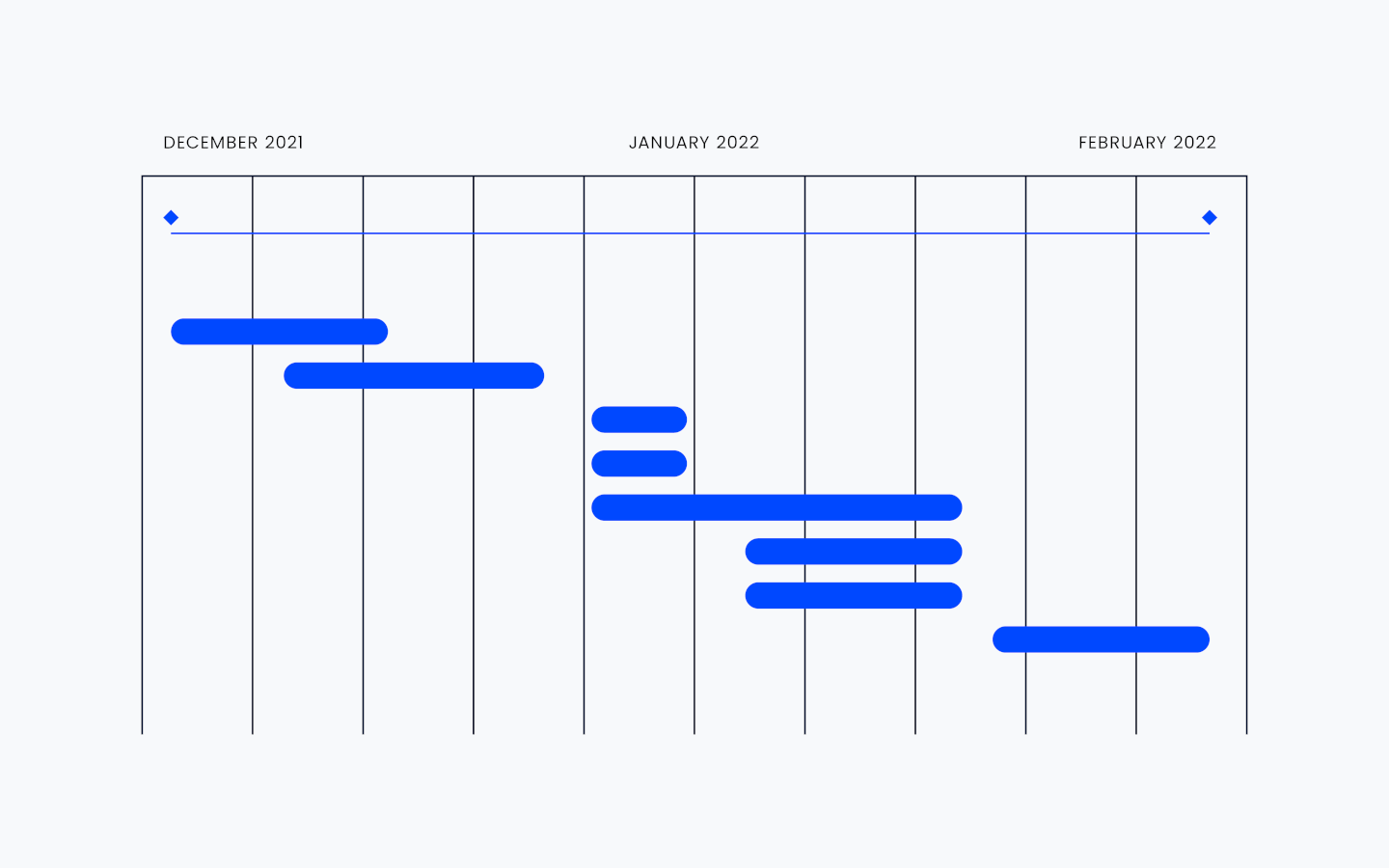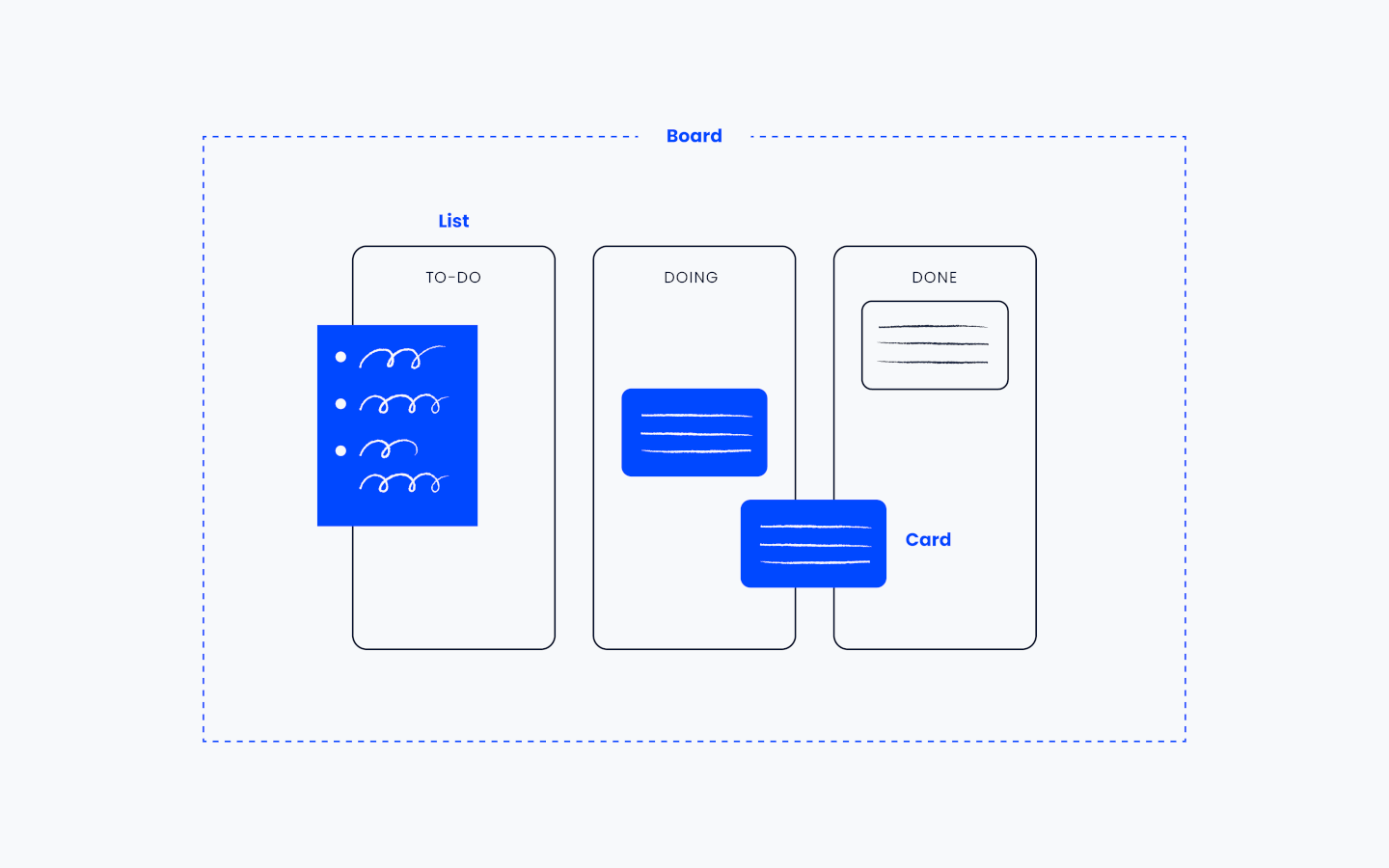Most people have heard of project management and politely smile and nod when I mention my job title. But, as my close friends ever so bluntly remind me, they’re sorry, but—they still have no idea what I do all day.
Maybe stakeholders think of me as the person who constantly bugs them for a status update in the company’s chosen project management software. I suppose I could live with that…
But, even when I talk to seasoned project managers or executives, they tend to distill the project management profession into vague metaphors like “herding cats” or “making sure the work gets done” or—my personal favorite—“keeping us organized.”
When it comes to planning a career in managing projects, however, you’ll need a bit more information to effectively describe—and market—your capabilities.
What Is Project Management?
Project management is the process of organizing, deploying, and orchestrating company resources to successfully complete an initiative that delivers on a specific goal.
Company resources are the people, finances, and equipment required to achieve project goals within the constraints of scope (what we agreed to do), time (when we need to do it by), and budget (how much money we have to get it done).
You can also think of a project as a focused investment of effort and resources to deliver a business outcome within a fixed timeframe (i.e., with a clear starting point and end point.)
Why Is Project Management Important?
Managing projects is a leadership-oriented and goal-based craft that is not only critical to the value and outcomes delivered by the project, but also to the well-being of the people involved in delivery.
It’s difficult for teams to achieve excellence in project delivery if the project manager role is a secondary responsibility tacked onto another role within the project team.
Project managers:
- Align key stakeholders, hold them accountable for project outcomes, and execute to a high degree of quality
- Provide a perspective on product cohesion and how well the project achieves its objectives and the expected return on investment. This is especially true in a digital world, where project teams are highly specialized and technology and ways of working are constantly changing. Good project managers are the specialists at leading, facilitating, and managing collaboration.
- Offer servant leadership to connect disparate teams, translate complex requirements and concepts, balance expectations as risks arise, and empower individuals to do their best possible work within the project constraints—even if those constraints are constantly shifting.
The 5 Phases Of Project Management
The Project Management Institute (PMI) describes five phases of the project life cycle in the Guide to the Project Management Body of Knowledge (PMBOK). These phases include:
- Project Initiation: defines the project vision, goals, and objectives to answer the question of “why” the team is doing this project. During this phase, the team determines the high-level project scope and deliverables and identifies key stakeholders.
- Project Planning: explains how the team will execute against project goals. The key outcome of this phase is a project plan that defines project activities, timeline, budget, risks, communications, assumptions and constraints, and staffing.
- Project Execution: during this phase, the project manager collaborates with project team members and other key stakeholders to execute against the project plan.
- Project Monitoring & Controlling: assesses project progress and reports on performance in terms of budget, schedule, and quality management. The project manager makes adjustments to the project plan, as needed, to ensure that the project stays on track.
- Project Closure: reviews project outcomes, documents lessons learned, and makes recommendations that can be applied to improve the execution of future projects.
Types of Project Management Methodologies
Because every project has a different set of desired outcomes, project managers need to be familiar with a variety of project management techniques to manage both the technical details of a project and the stakeholders involved.
The project management methodology that you use on your project depends on the size of the company, team composition, project requirements and goals, and the nature of the project itself.
Sequential Methodologies

Sequential approaches are best when project outcomes are more predictable.
A sequential approach requires advanced foresight and involves scheduling static phases—like requirements analysis, design, testing, implementation, and maintenance—in a predefined order.
Some examples of this approach include waterfall project management, the critical path method, and critical chain project management.
Agile Methodologies

Agile approaches are best suited for collaborative projects that must respond to frequent change.
An agile approach is driven by the principles of the agile manifesto. Agile projects (typically software development projects) often use short delivery cycles, or “sprints,” to organize work. Sprints are designed to be iterative and allow for rapid adjustments throughout the project.
Some examples of agile approaches include Scrum agile, Kanban, eXtreme Programming (XP), and the adaptive project framework.
Hybrid Methodologies
Because every project has unique requirements, and every organization has unique needs and working styles, many teams will tailor their chosen project management methodology to blend sequential and agile approaches.
The most common hybrid is a blend of waterfall and agile project management in which the team plans the project and analyzes requirements using the waterfall method and develops and evaluates project work using an agile methodology.
Other Methodologies
Given that project management as a craft and specialization has been around for some time now, it’s perhaps unsurprising that there are other methodologies that don’t belong to the categories above.
One example is Lean Six Sigma, which is a business process optimization methodology that originated in more of a manufacturing context.
When selecting a methodology, it’s important to recognize that a project manager not only sets the project direction, maintains quality standards, and reports status, but they may also wish to align that project with an organization’s broader strategic objectives.
Project managers use a different set of tools for managing project portfolios or business processes more broadly.
What Is A Project Manager?
A project manager is responsible for promoting stakeholder alignment, accountability to stated project goals, and high-quality execution throughout the project life cycle.
What Does A Project Manager Do?
Project managers collaborate with teams, stakeholders, executive sponsors, and clients to execute project activities, prioritize key questions for decision making, drive proactive communications, and look ahead to remove or manage potential risks to project success.
A great project manager delivers the most value by understanding the balance of project objectives versus constraints and managing stakeholders to achieve objectives within those constraints.
Tactically, project manager responsibilities include:
- Communicating and clarifying project scope as set forth in the project charter
- Creating and updating the project plan
- Gathering project requirements
- Communicating with project stakeholders and the project sponsor
- Evaluating the team’s capabilities and planning team capacity to assign realistic deadlines and optimize success
- Directing budget and adjusting, as needed, throughout the project life cycle
- Recording and managing identified risks
- Defining project management processes to streamline the way people work together.
What Skills Do Project Managers Need?
Because of the broad nature of their responsibilities, project managers must possess a diverse set of skills, including:
- Effective communication skills and emotional intelligence to tailor information to specific audiences and assess and manage relationships and social dynamics
- Critical thinking skills to be able to ask questions; identify, sequence, and prioritize activities; perform risk management; and engage in problem solving
- Leadership skills to create a psychologically safe working environment that motivates and empowers teams to do their best work
- Business acumen to align project outcomes to organizational priorities
- Project planning and scheduling, including budget management, resource allocation, and capacity planning.
Common Challenges In Project Management
Project management, while a rewarding profession, is also a demanding one. Below are some examples of common challenges that you may encounter as a project manager.
Resource Constraints
Project managers are responsible for allocating team members’ time to project tasks. Doing so requires knowledge of how long tasks are expected to take plus the competencies required for team members to generate successful project outcomes.
In addition to the capacity planning and leadership skills required for optimal resource allocation, project managers often have to deal with competing demands on their team members’ time and/or insufficient funding to carry out project tasks.
Project managers need to be creative and judicious when it comes to resource management, so they can adjust, as needed, in the face of change.
Scope Creep
Scope creep occurs when project deliverables or features expand beyond what the team initially agreed to deliver. While it may seem harmless to accommodate an extra bell or whistle here and there, those changes start to add up, and you can suddenly find yourself way off kilter.
To reduce the risk of scope creep:
- Document in your project charter what is in and out of scope so you have a record of what decisions were made
- Build contingency into your project timeline so you can address any unforeseen issues that may arise
- Collaborate closely with your stakeholders to manage and prioritize incoming requests and raise potential issues as they occur.
Stakeholder Management
Project managers must engage with cross-functional stakeholders to collect feedback, execute project tasks, and communicate progress.
As the team’s communication hub, it can be difficult to manage a diverse set of stakeholder expectations, motivate and empower team members, and stay on top of a myriad of project tasks, while avoiding burnout.
Make sure that you document decisions, action items, and open questions to foster alignment and accountability across the project team. Take the time to get to know your team members’ strengths, professional interests, and career aspirations, so you can assign work effectively.
Example Of Project Management In Action
Imagine your organization is embarking on a new project to acquire another company. Each department, from legal to sales to product to engineering to finance, has a role to play in project success. Leaders have a vague idea of what needs to get done, but the effort lacks a clear “owner” that is responsible for project success.
Appointing a project manager to oversee this effort ensures that the project gets off the ground with clearly defined objectives that stakeholders agree upon.
During the project planning phase, the project manager further elaborates what’s in and out of scope for the effort, breaks down project goals into discrete tasks, and defines roles and responsibilities for project team members engaged in the effort. Without a project manager, the team may not have aligned on common goals and would have failed to stay accountable to what was decided.
The project manager monitors the teams’ progress in conducting the required activities and works cross functionally to remove blockers or other impediments to success. The project manager also reports on progress to date and potential risks so leadership feels confident that the project is on track for completion.
Finally, at project closeout, the project manager documents lessons learned and updates organizational processes so teams are more efficient and effective at executing these types of projects moving forward.
Best Tools For Project Management
Project management tools come in many different forms. Some project management tools are offered as a suite and positioned as an all-in-one solution. Others focus on a specific area of project management with the ability to easily integrate into a broader software ecosystem.
Examples of project management tools include:
- Project management software: reduces the risk of scope creep by defining what activities are part of a project, improves scheduling, identifies dependencies, and simplifies status reporting to keep stakeholders in the know
- Resource management software: identifies and allocates resources across a project or portfolio of projects, tracks resource availability throughout the project life cycle, and offers scenario planning capabilities to adjust resourcing real-time
- Budgeting software: tracks project costs, including labor, equipment, and materials; forecasts future expenses; and monitors available funds so you can course correct without overrunning your budget.
How To Learn Project Management
If you’re an experienced project manager looking to hone your skills or you’re a newbie looking to break into the field, you could consider a few different avenues for learning project management.
These include but are not limited to:
- Digital Project Manager’s digital project management certificate (DPM School)
- PMI’s Project Management Professional (PMP certification)
- Certified ScrumMaster (CSM)
- Project management tool certifications (e.g., Atlassian offers several courses designed to cultivate Jira proficiency.)
Future Trends In Project Management
How do we expect project management to evolve in the future? Here are 3 trends that are likely to impact the project management profession:
- Evolving digital tools and technologies: According to a Zion Market Research study, the global project management software industry is expected to grow by 10% annually between 2022 and 2030. Given an ever more crowded market, project managers will need to be able to evaluate, prioritize, and implement technology solutions to optimize workflows and improve resource planning.
- Rise of artificial intelligence: Project managers can use generative artificial intelligence tools, such as OpenAI’s ChatGPT and other alternatives, to complete routine tasks, like summarizing feedback from project retrospectives. Project managers will need to be savvy enough to know how these tools can help them and also understand their potential pitfalls (e.g., avoid inputting proprietary information.)
- Increasing demand for strategic project managers: Perhaps linked to the rise of artificial intelligence in project management for automating lower-level responsibilities, organizations are increasingly looking for project managers to add value via their knowledge of the business. As companies look to scale, project managers can help organizations understand the weak points in their processes, craft rock-solid business objectives, and promote stakeholder buy-in to ensure things get done.
FAQs about Project Management
Below are some frequently asked questions about project management.
What’s The Difference Between Project Management and Product Management?
Project management involves defining a measurable goal, planning the work required to achieve that goal, executing the work, monitoring progress, and then documenting lessons learned from executing the work to apply to future endeavors.
Product management requires similar skills but applies them to a product, rather than a program. Product managers think in-depth about the product they are designing and how that product will help achieve company objectives.
What’s The Difference Between Project Management and Program Management?
Project management is the organization, deployment, and orchestration of resources to complete a specific objective. Program management involves managing multiple related projects to advance a strategic initiative.
Program managers and project managers perform similar functions, but program managers tend to operate on more complex projects on a larger scale.
To make things more confusing, project management and program management can sometimes be interchangeable terms, depending on the industry.
What Are Some Common Project Types?
The most common project types are agile and waterfall. Agile projects deliver work in iterations and increments to collect and respond to ongoing stakeholder feedback.
Waterfall projects run from start to finish based on the requirements defined at the beginning of the project and adhere to a structured process and schedule of milestones and deliverables.
Is Project Management A Good Career Path?
A project manager’s responsibilities are to lead teams, drive outcomes, and design processes and workflows. Project management skills will continue to be in demand, regardless of whether the day-to-day responsibilities of a project manager shift over time.
Working with people is interesting, rewarding, and ever changing, making project management an exciting and continually evolving line of work.
What's Next?
To learn more about how to grow your project management career, subscribe to The Digital Project Manager newsletter.


